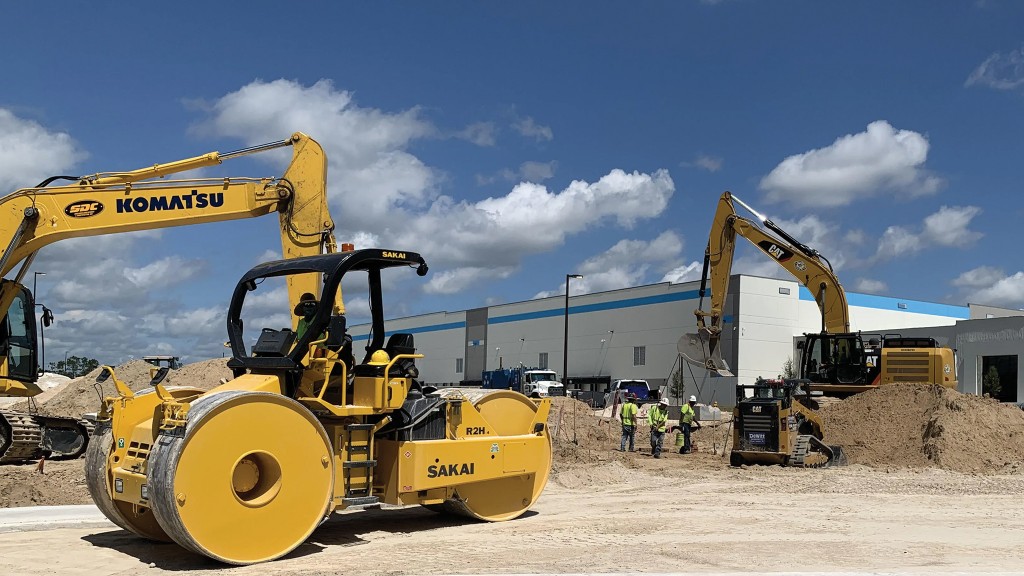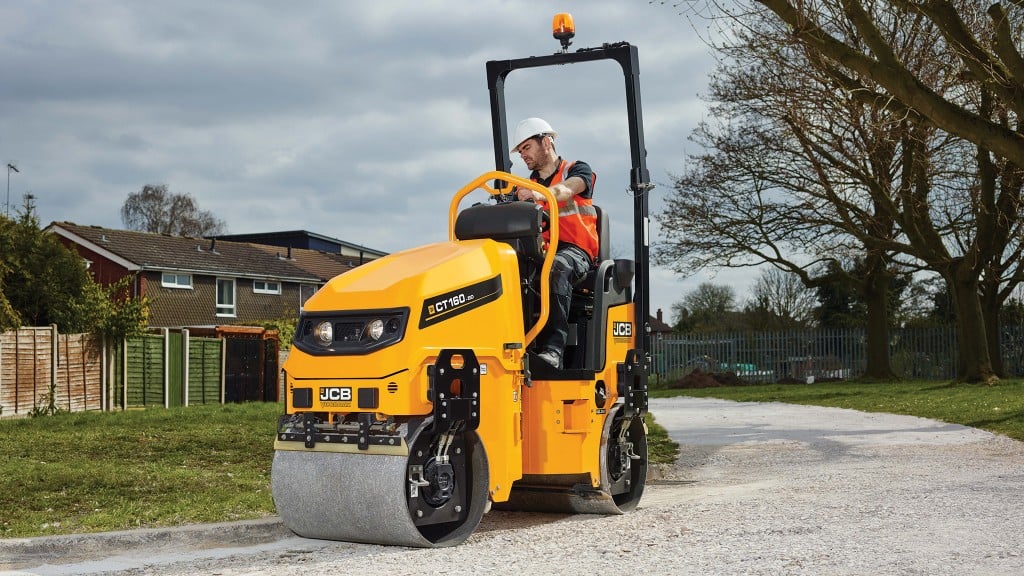Rollers designed to maximize operator awareness
Sakai designs rollers that emphasize visibility combined with technology to reduce accidents

Roadbuilding job sites are busy places, with workers and machinery moving constantly to ensure trucks, pavers, and rollers work together effectively. This can lead to increased risk of machines colliding with workers or other equipment. New technology and design features on tandem rollers are intended to reduce the risk of collisions.
Roller operators need to keep an eye on everyone around them when working, but that is easier said than done, explains Brad Belvin, sales and marketing manager with Sakai America.
"There are so many people on that job site, from dump truck operators to the people on the paving crew, to the rake people, people with a shovel, inspectors coming through – everyone has to be aware of everyone else at all points and times," he says. "From a roller standpoint, you're out there for eight hours a day going forward and backward – you have to pay attention. Awareness has to be the number one concern."
Visibility, comfort, and ease of control play into safety
Visibility is the top safety concern for roller design, Belvin says. It is important that workers on the ground and the roller operator can see one another clearly while the machine is working, no matter the angle the operator's seat is at.
To determine the quality of visibility, Sakai uses what Belvin describes as a one-by-one system – if a one-metre by one-metre cube is placed against the machine on the front, side, or rear, the operator should be able to see it from their station. If not, the design must be adjusted.
Operator comfort is a close second to visibility for safety-focused design. If the operator is comfortable on the machine, they will be more vigilant throughout the day.
Operators of large Sakai double-drum asphalt rollers are provided with a 180-degree swivel seat that has a number of different locking points. A lever the operator can control with their heel unlocks the seat for rotation, removing the need to bend over which reduces another stress point.
"If it's easier to move with less obstruction and less torquing on your body, it's going to be less stress on the person," Belvin says. "If you are more stressed and more tired . . . you're less aware because you're focused on other things. Taking out that uncomfortable element and making it as easy to operate as possible increases overall awareness."
A third area to consider is ease of control – the easier it is to understand and use the roller controls, the better for operator awareness. If a machine is difficult to run, the operator is going to spend more time focused on the controls and less on the surroundings. Sakai's controls are kept very simple to reduce the operator's stress, Belvin says.
Guardman quickly but smoothly brakes the roller when an obstacle is detected
The ability to brake quickly and smoothly is important for a machine as large as a roller.
"On our 79- or 84-inch double-drum rollers, you're talking about 30,000-pound machines going at a general operating speed of around four and a half miles per hour. Stopping 30,000 pounds at that speed is not something you can immediately do," Belvin says.
Sakai Guardman is integrated into the machine hydraulics to slow and stop the machine if an obstruction is detected.
"It's essentially a rear proximity detection system but takes it a step further, where it actually brakes the machine before making contact with someone or something," Belvin explains.
Guardman is available on a number of Sakai rollers, including the SW884ND, the first roller models to be produced in and specifically for North America. It uses either a millimetre-Hertz wave radar system or 3D LIDAR depending on the machine, which detects objects behind the roller and moves through three stages of response.
When an obstacle is first detected, the system sounds an audio alert to the operator. If the machine moves closer, the audio alerts become more aggressive. Within a certain distance, the system engages through the hydraulics and brings the roller to a safe and smooth stop.
"If you're going full speed, the machine does not come to a shaky, abrupt stop . . . it will slow the machine down just enough so it doesn't skid," Belvin says. "Obviously, the last thing you care about is the asphalt at that point in time, but if it can still protect that job, that is a nice thing."
In addition to protecting those around the machine, Guardman also collects data about incidents that activate the system, providing greater awareness for owners and operators about the job site safety culture.
"Calculating near misses or stopping a general injury – it's anything you can do to protect your workers. Did it go off and engage? How many times does that happen?" Belvin says. "Any time it does go off completely, you now have a time where you can sit down before a shift and say ‘maybe we need to do more coaching here, and raise more awareness of the people that are on our job site.'"
Company info
90 International Parkway
Adairsville, GA
US, 30103
Website:
sakaiamerica.com
Phone number:
1-800-323-0535



